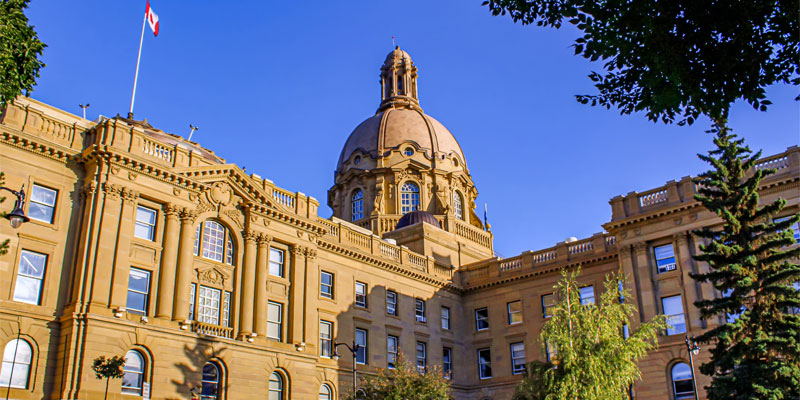Alberta’s multiple crises include waning economic freedom

From 2009 to 2015, Alberta proudly ranked first in economic freedom among the 10 Canadian provinces, 50 U.S. states and 32 Mexican states. But according to the Fraser Institute’s new Economic Freedom of North America report (which is based on 2018 data, the most recent available), while the province still ranks first in Canada it’s fallen to 9th overall.
Economic freedom—the ability of individuals, families and investors to make their own economic decisions—powers economic growth and prosperity. Indeed, Alberta’s stellar economic performance over the last several decades was not only driven by oil and gas but also a high level of economic freedom, which encouraged entrepreneurship and investment in multiple industries and made the province an attractive place for corporate offices.
Our report measures regulatory restrictions on free exchange and contracting, levels of taxation, government spending and other key indicators. Sensible regulation and reasonable taxes may seem obvious components of economic freedom but government spending is also important, even if the money falls from heaven, gushes from an oil well or is borrowed from the next generation.
High government spending reduces the space for free exchange. It creates dependence and a politicized economy as government—not the marketplace—becomes an ever more important customer.
Alberta’s explosion of government spending helped precipitate its decline of economic freedom. In our report, the province’s score in the spending category dropped from 8.60 in 2015 to 6.40 in 2018 (high scores indicate low spending). It also lost ground in taxation, falling from 7.59 in 2015 to 7.16 in 2018.
This relatively small decline in economic freedom on taxation compared to spending may seem encouraging but actually points to a growing threat. The gap between spending and taxation leads to budget deficits and debt and the need to control spending or massively increase taxes, further reducing economic freedom—high taxes reduce growth, then government taxes the revenues in this lower-growth environment.
Let’s look at the numbers. Alberta’s provincial government spending grew from $27.2 billion in 2005-06, with an surplus of $8.9 billion, to $40.3 billion in 2008-09 with a deficit of $0.9 billion. Then the global financial crisis hit, so spending automatically increased. The problem is, it never effectively came down.
In most years, spending continued to soar and deficit warnings were flashing before the mid-2014 decline in energy prices. From 2008-09 to 2013-2014, every year rang up a deficit. By 2018-2019, Alberta government spending rose to $56.4 billion. Revenues grew too, but not nearly as much, from $35.9 billion in 2005-06 to $49.6 billion in 2018-2019, leading to a 2018-19 deficit of $6.7 billion (though that was down from $10.8 billion in 2016-17 and $8.0 billion in 2017-18).
On the taxation side, Albertans endured years of tax increases in corporate tax, income tax, capital gains tax and taxes on fuel, health care, insurance and liquor among others.
The Kenney government has pledged to get spending under control and restore tax competitiveness, which would increase Alberta’s economic freedom. Although this will be difficult in a time of COVID. For the current fiscal year, Alberta projects a historic budget deficit of $24.2 billion with revenue of $38.4 billion and spending of $62.6 billion.
Alberta faces three crises—COVID (like everyone), challenges to the oil and gas industry, and its decline in economic freedom. Of the three, only economic freedom is fully in the hands of Albertans to control.


